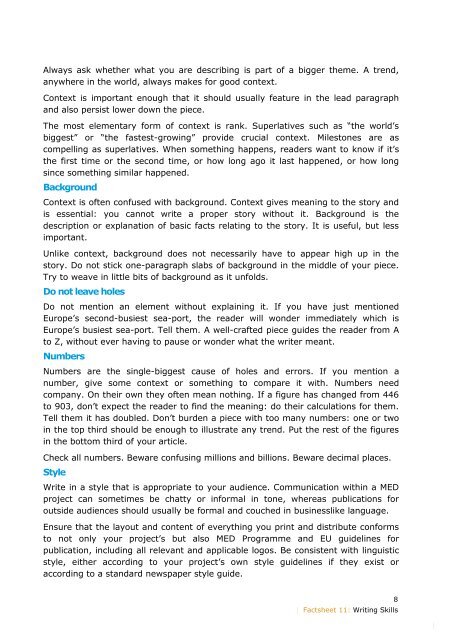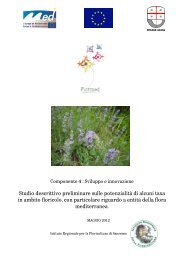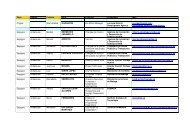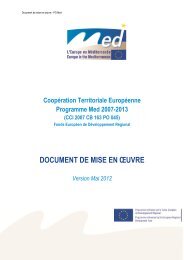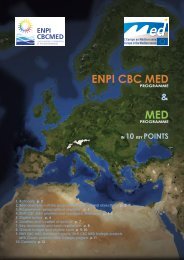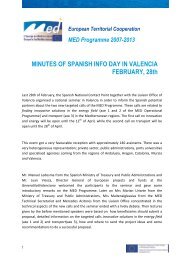MED Communication Handbook - Programme Med
MED Communication Handbook - Programme Med
MED Communication Handbook - Programme Med
You also want an ePaper? Increase the reach of your titles
YUMPU automatically turns print PDFs into web optimized ePapers that Google loves.
Always ask whether what you are describing is part of a bigger theme. A trend,<br />
anywhere in the world, always makes for good context.<br />
Context is important enough that it should usually feature in the lead paragraph<br />
and also persist lower down the piece.<br />
The most elementary form of context is rank. Superlatives such as “the world’s<br />
biggest” or “the fastest-growing” provide crucial context. Milestones are as<br />
compelling as superlatives. When something happens, readers want to know if it’s<br />
the first time or the second time, or how long ago it last happened, or how long<br />
since something similar happened.<br />
Background<br />
Context is often confused with background. Context gives meaning to the story and<br />
is essential: you cannot write a proper story without it. Background is the<br />
description or explanation of basic facts relating to the story. It is useful, but less<br />
important.<br />
Unlike context, background does not necessarily have to appear high up in the<br />
story. Do not stick one-paragraph slabs of background in the middle of your piece.<br />
Try to weave in little bits of background as it unfolds.<br />
Do not leave holes<br />
Do not mention an element without explaining it. If you have just mentioned<br />
Europe’s second-busiest sea-port, the reader will wonder immediately which is<br />
Europe’s busiest sea-port. Tell them. A well-crafted piece guides the reader from A<br />
to Z, without ever having to pause or wonder what the writer meant.<br />
Numbers<br />
Numbers are the single-biggest cause of holes and errors. If you mention a<br />
number, give some context or something to compare it with. Numbers need<br />
company. On their own they often mean nothing. If a figure has changed from 446<br />
to 903, don’t expect the reader to find the meaning: do their calculations for them.<br />
Tell them it has doubled. Don’t burden a piece with too many numbers: one or two<br />
in the top third should be enough to illustrate any trend. Put the rest of the figures<br />
in the bottom third of your article.<br />
Check all numbers. Beware confusing millions and billions. Beware decimal places.<br />
Style<br />
Write in a style that is appropriate to your audience. <strong>Communication</strong> within a <strong>MED</strong><br />
project can sometimes be chatty or informal in tone, whereas publications for<br />
outside audiences should usually be formal and couched in businesslike language.<br />
Ensure that the layout and content of everything you print and distribute conforms<br />
to not only your project’s but also <strong>MED</strong> <strong>Programme</strong> and EU guidelines for<br />
publication, including all relevant and applicable logos. Be consistent with linguistic<br />
style, either according to your project’s own style guidelines if they exist or<br />
according to a standard newspaper style guide.<br />
8<br />
� Factsheet 11: Writing Skills<br />
�


